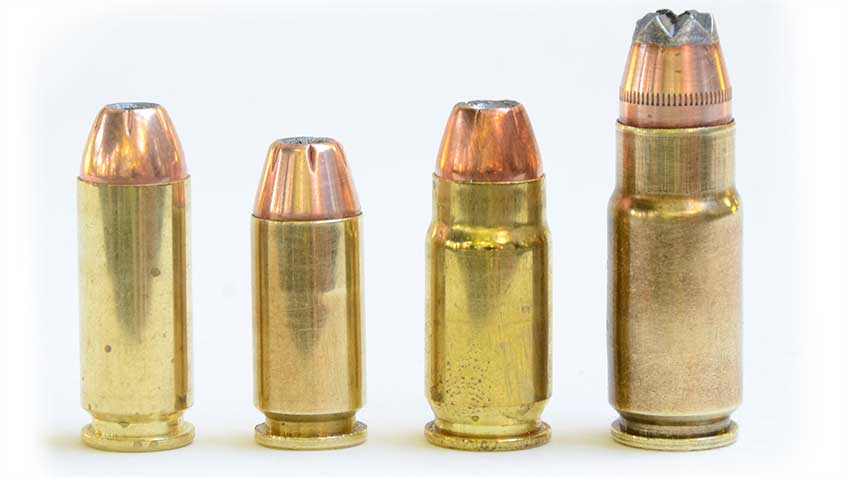
Testing and real-life performance in shootings have demonstrated the 9mm to be a very effective defensive cartridge within common self-defense or police shooting distances. Depending on the load, 9mm can produce up to 480 ft/lbs of muzzle energy, though the majority of typical defensive loads produce between 300-400 ft/lbs.

Modern 9mm Parabellum JHP (jacketed hollow point) defensive bullets perform very well in terminal ballistic/gel testing, with many loads achieving the FBI’s recommended effective penetration of between 12 and 18 inches of ballistic gel, and expanding up to. In essence, the 9mm retains lethal velocity and energy farther than you can accurately shoot it, whether you are using a handgun or a rifle/carbine. if you can hit anything that far away with it, which almost nobody can.

So, if we take that number as accurate, we can see that even past 400 yards, a common 9mm bullet is still “lethal”. As of today, that number has been increased to 59 ft/lbs. For reference, the US Armed Forces reportedly said during WWII that a bullet impact of 36 ft/lbs of energy was potentially lethal. At those distances, 9mm bullets are still traveling very quickly and are absolutely capable of delivering effectively lethal energy and damage.įor example, a run-of-the-mill 9mm “ball” load of Federal American Eagle 124 grain FMJ (full metal jacket) at 100 yards has a velocity of around 960 fps, for an energy of at least 250 ft/lbs, which is certainly capable of inflicting a lethal wound.Īt 200 yards with the same load, velocity has only dropped to 855 fps, and energy is 201 ft/lbs.Įven at 400 yards, velocity exceeds 680 fps, and energy is around 130 ft/lbs. Typically, 100 yards is at the far end of the practical limit for the vast majority of handgun shooters, and most have trouble hitting with any practical accuracy beyond about 40 yards or so. 45 ACP), and certainly isn’t close to what a well-designed rifle bullet can do, some of which have BCs of 0.83 or better. This isn’t particularly good (several semi-auto handgun cartridges offer bullets with higher BC, even the. The cartridge is certainly capable of being effective at further distances, but the question becomes, how effective can the shooter be at making those longer-range hits? The G1 ballistic coefficient (BC) of most 9mm bullets varies from around 0.13 for many 115-grain bullets to 0.17 for some 147-grainers (higher BC bullets generally “fly better”). The 9mm Parabellum cartridge was designed by its creator, Georg Luger, to be lethally effective out to 50 meters (164 feet). 22LR is greater than around 250 yards maximum. But almost nobody would claim that the “effective range” of. 22LR ammo published that the bullet was potentially lethal out to one mile, and tests have shown that to be the case. After all, we know that for many years, manufacturers of.

Carbines and rifles can often produce even higher velocities.ĭiscussing the “effective range” of any cartridge is always a question of priorities and is somewhat subjective. If you choose to shoot +P or +P+ ammo through your gun, you assume the risks or at the very least, the increased recoil and wear to the gun. In +P and +P+ (higher pressure) loadings from boutique manufacturers such as Underwood Ammo and Buffalo Bore, you can potentially achieve speeds of around 1,400 fps in 115 grain, 1,300 fps in 124 grain, and 1,100 fps in 147 grain 9mm from standard-length handgun barrels. In standard, non-plus-P loads, commonly available 115-grain 9mm cartridges typically produce around 1,150-1,200 fps from 4” barrels, while 124-grain bullets are usually clocking around 1,100-1,150 fps (there are some aberrations but this is a pretty good generalization). Modern loadings can do a little better, but many “bulk” loads today produce similar numbers. The original 9mm Luger load from 1902 was an 8 gram bullet (approximately 124 grains) fired at a speed of 327 meters per second (1,073 feet per second) out of a 100mm-long barrel (a little less than 4 inches).


 0 kommentar(er)
0 kommentar(er)
